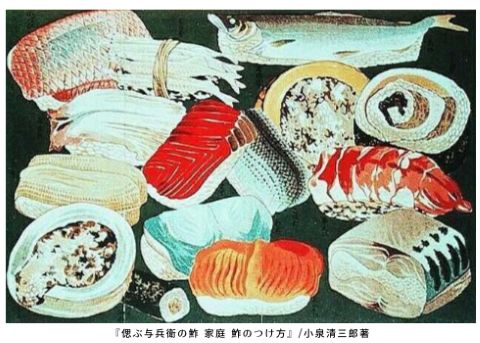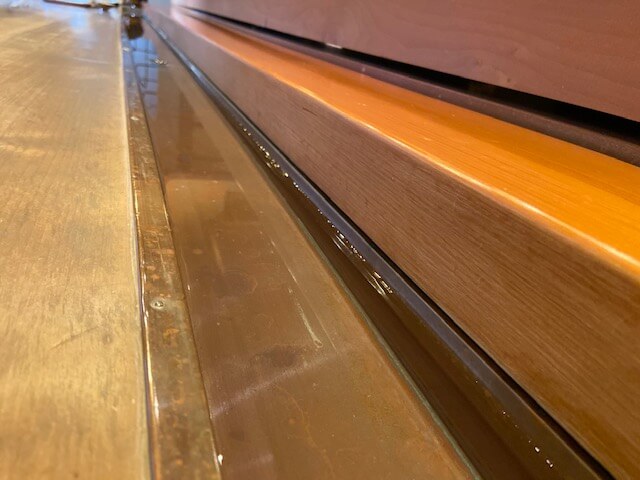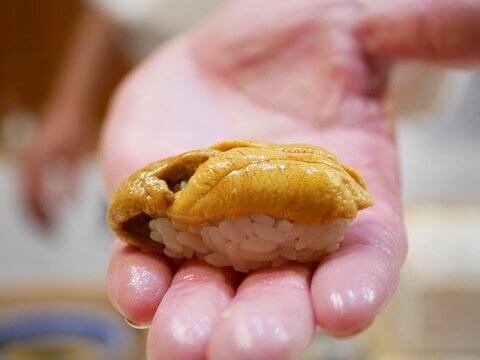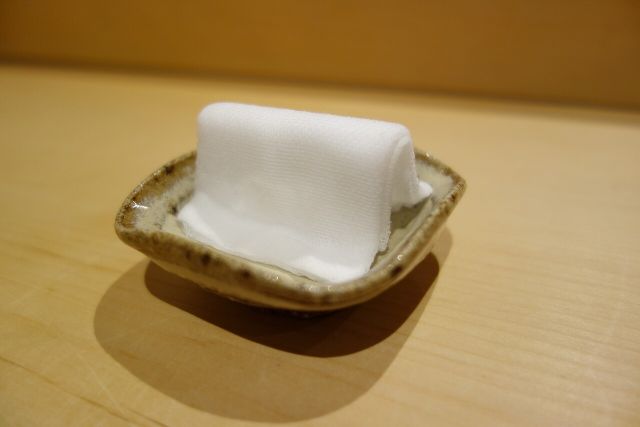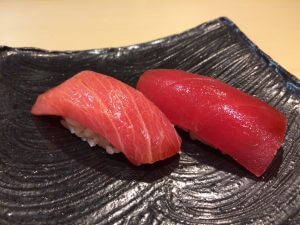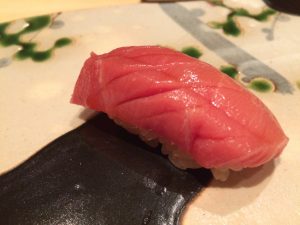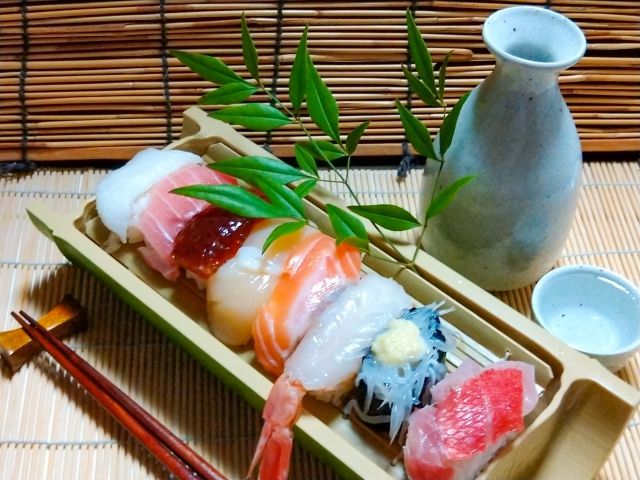
The Art of Pairing Sushi and Sake: From Pairing to Perfect “Mariage”
What Is “Mariage”?
The word mariage means “marriage” in French. In the world of food and drink, it refers to a perfect union where the combination of two elements—such as sake and sushi—creates a new flavor experience that neither can achieve alone.
While the concept originated in French wine culture, Japan has its own refined version through the harmony between sushi and sake. Both are crafted from rice, water, fermentation, and the spirit of seasonality—making them natural partners.
What Is “Pairing”?
Pairing is simply the act of combining two items—such as food and drink—regardless of whether the result is successful or not. All mariage starts from a pairing, but not all pairings become mariage.
In other words:
- Pairing = the action or experiment
- Mariage = the result of harmony and synergy
How to Enjoy Sushi and Sake Mariage
Here are 3 keys to exploring the beautiful relationship between sushi and sake:
- Match the “Weight”
Light-flavored sushi pairs best with light sake, and rich-tasting sushi goes better with full-bodied or aged sake.
| Sushi Ingredient | Recommended Sake | Example Brands |
|---|---|---|
| White Fish (Tai, Hirame) | Light, dry Junmai Ginjo | Dassai 45 (獺祭), Tedorigawa Yamahai (手取川山廃) |
| Fatty Tuna (Otoro) | Aged or Yamahai Junmai | Kokuryu Ryu (黒龍) |
| Vinegared Mackerel (Saba, Kohada) | Sparkling sake or acidic Kimoto | Ichinokura “Suzune (すず音)”, Kenbishi (剣菱) |
| Sea Urchin (Uni), Eel (Anago) | Rich Junmai or Koshu (aged sake) | Gekkeikan “Horin (鳳麟)” |
| Sweet Shrimp (Amaebi), Scallop | Elegant Daiginjo | Juyondai (十四代), Hakkaisan Daiginjo (八海山 大吟醸) |
- Seek Aromatic Harmony
Pair citrus-accented sushi (e.g., with yuzu or sudachi) with sake that has fresh, fruity or floral aromas.
For example, a grilled piece of aburi sushi may go well with an aged sake that has a nutty, smoky aroma. - Consider Local Pairing (Terroir)
Just like wine, local ingredients often pair naturally with local beverages. Try regional sushi with sake brewed in the same area:
- Toyama sweet shrimp nigiri sushi × Masuizumi (Toyama)
- Hiroshima red seabream nigiri sushi × Kamotsuru Tokusen (Hiroshima)
Sake Styles and Ideal Sushi Matches
| Sake Type | Characteristics | Ideal Sushi Match |
|---|---|---|
| Junmai Ginjo | Light, floral, smooth | White fish, squid, scallop |
| Yamahai / Kimoto | Bold, umami-rich, slightly acidic | Fatty fish, grilled eel |
| Koshu (Aged Sake) | Deep, nutty, complex | Anago, aged tuna, uni |
| Sparkling Sake | Light, fizzy, refreshing | Vinegared fish, pickled rolls |
What Makes It “Mariage”?
In the best pairings, sake and sushi don’t just sit side by side—they melt together on the palate. This “in-mouth blending” is called kōchū-chōmi (口中調味) in Japanese culture, a form of sensory harmony unique to washoku (Japanese cuisine).
When achieved, this experience is no longer just a pairing—it is a mariage.
Final Thoughts
Sushi and sake mariage is not about bold contrasts, but subtle harmony. It’s a delicate dialogue between aroma, texture, and umami. Exploring this connection is not only a culinary pleasure, but also a journey into Japan’s deep cultural aesthetics.
Whether you’re enjoying sashimi with a crisp Junmai Ginjo or savoring otoro with a mellow aged sake, your taste buds are being invited into one of Japan’s finest traditions: the elegant fusion of sushi and sake.
We hope this information will be helpful.

Revision date: June 5, 2025
Share this article
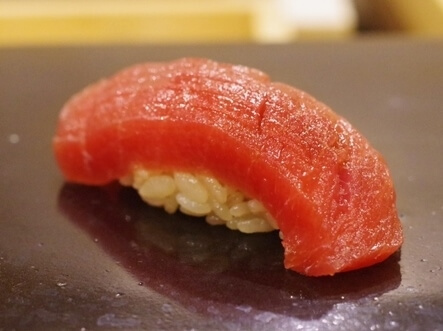 Natural fish are part of the food chain and have concentrations of harmful substances. Since 2000 the amount of mercury found in fish has become an issue. The American Natural Resources Defense Council has said tuna is a fish that should be avoided if pregnant or planning to get pregnant. A more recent problem is the large amounts of micro plastics found in fish meat. This shocking phenomenon will likely be reported by research organizations at some point in time. If it does reach that extreme, then it will be better to avoid the danger of eating fish.
Natural fish are part of the food chain and have concentrations of harmful substances. Since 2000 the amount of mercury found in fish has become an issue. The American Natural Resources Defense Council has said tuna is a fish that should be avoided if pregnant or planning to get pregnant. A more recent problem is the large amounts of micro plastics found in fish meat. This shocking phenomenon will likely be reported by research organizations at some point in time. If it does reach that extreme, then it will be better to avoid the danger of eating fish.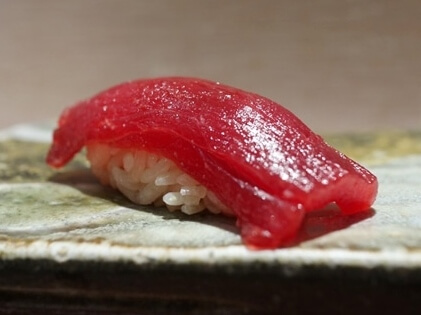 Tuna at top-end restaurants is light in flavor. Its Akami (red meat) has an indescribable acidity with a delicate harmony between the shari vinegar, the nikiri soy sauce, and wasabi. However, on the other side of the coin, it feels almost like a waste to eat it without a sense of luxury. Of course tuna with delicious akami, also has delicious fatty tuna (toro). And you’ll never get tired of it. It would be easy to polish off 10 pieces as a light snack. Contrary to popular belief, it’s not the high fat content that makes it so easy to eat. However, it is because of that popular belief that many people feel that the big chain store
Tuna at top-end restaurants is light in flavor. Its Akami (red meat) has an indescribable acidity with a delicate harmony between the shari vinegar, the nikiri soy sauce, and wasabi. However, on the other side of the coin, it feels almost like a waste to eat it without a sense of luxury. Of course tuna with delicious akami, also has delicious fatty tuna (toro). And you’ll never get tired of it. It would be easy to polish off 10 pieces as a light snack. Contrary to popular belief, it’s not the high fat content that makes it so easy to eat. However, it is because of that popular belief that many people feel that the big chain store 
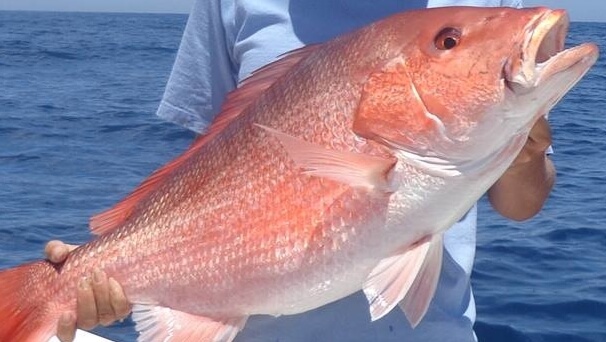 Biologically, Snapper is a generic term for all species in the snapper family (
Biologically, Snapper is a generic term for all species in the snapper family (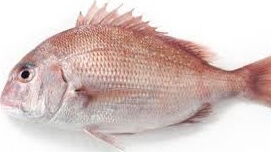 They say there are over 300 different species of fish with “Tai” in the name, making up 10% of Japan’s fish. When we say “Tai” in Japanese, we are referring to “madai” or red sea bream. Red sea-bream is categorized in the “madai” family (
They say there are over 300 different species of fish with “Tai” in the name, making up 10% of Japan’s fish. When we say “Tai” in Japanese, we are referring to “madai” or red sea bream. Red sea-bream is categorized in the “madai” family (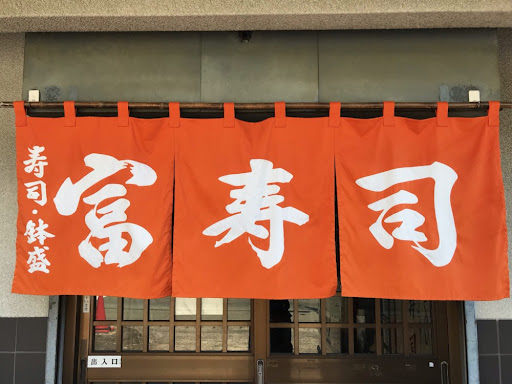
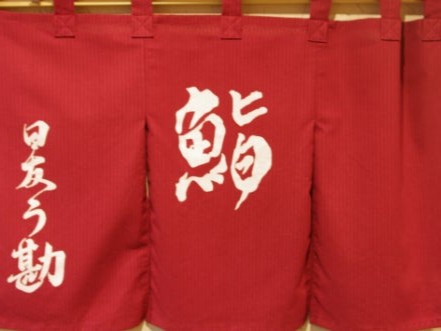
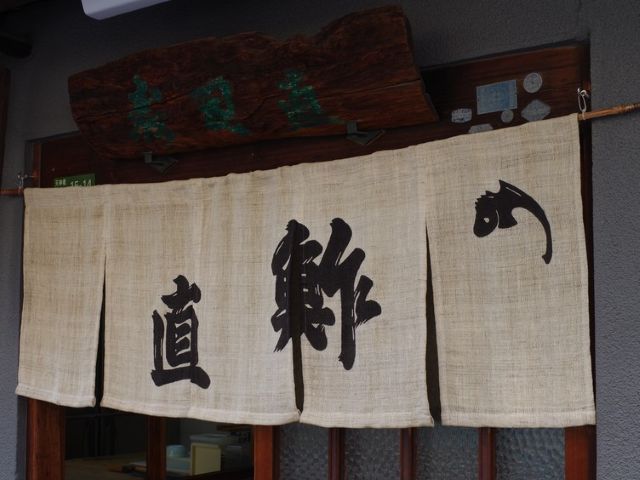
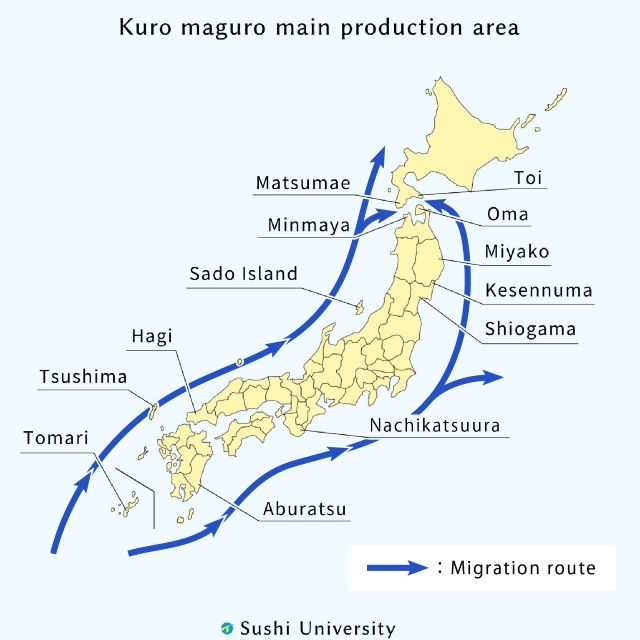
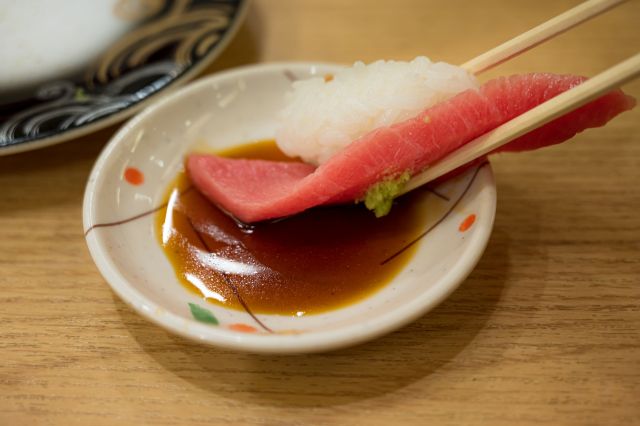
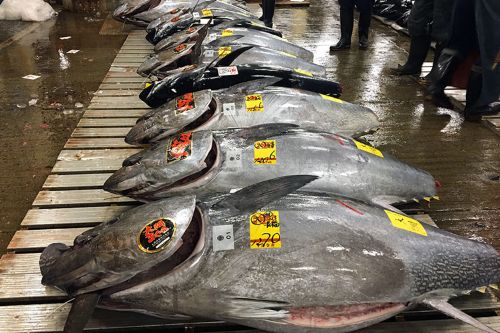
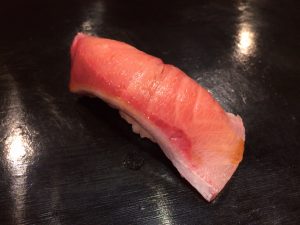
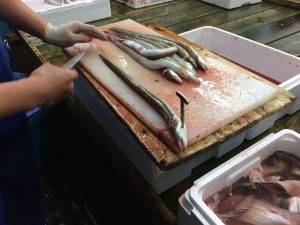 Many overseas visitors who are not accustomed to eating fish often find the fishy smell off-putting. This odor is mainly caused by a compound called trimethylamine, which forms when bacteria break down trimethylamine oxide, a substance abundant in fish that contributes to
Many overseas visitors who are not accustomed to eating fish often find the fishy smell off-putting. This odor is mainly caused by a compound called trimethylamine, which forms when bacteria break down trimethylamine oxide, a substance abundant in fish that contributes to 